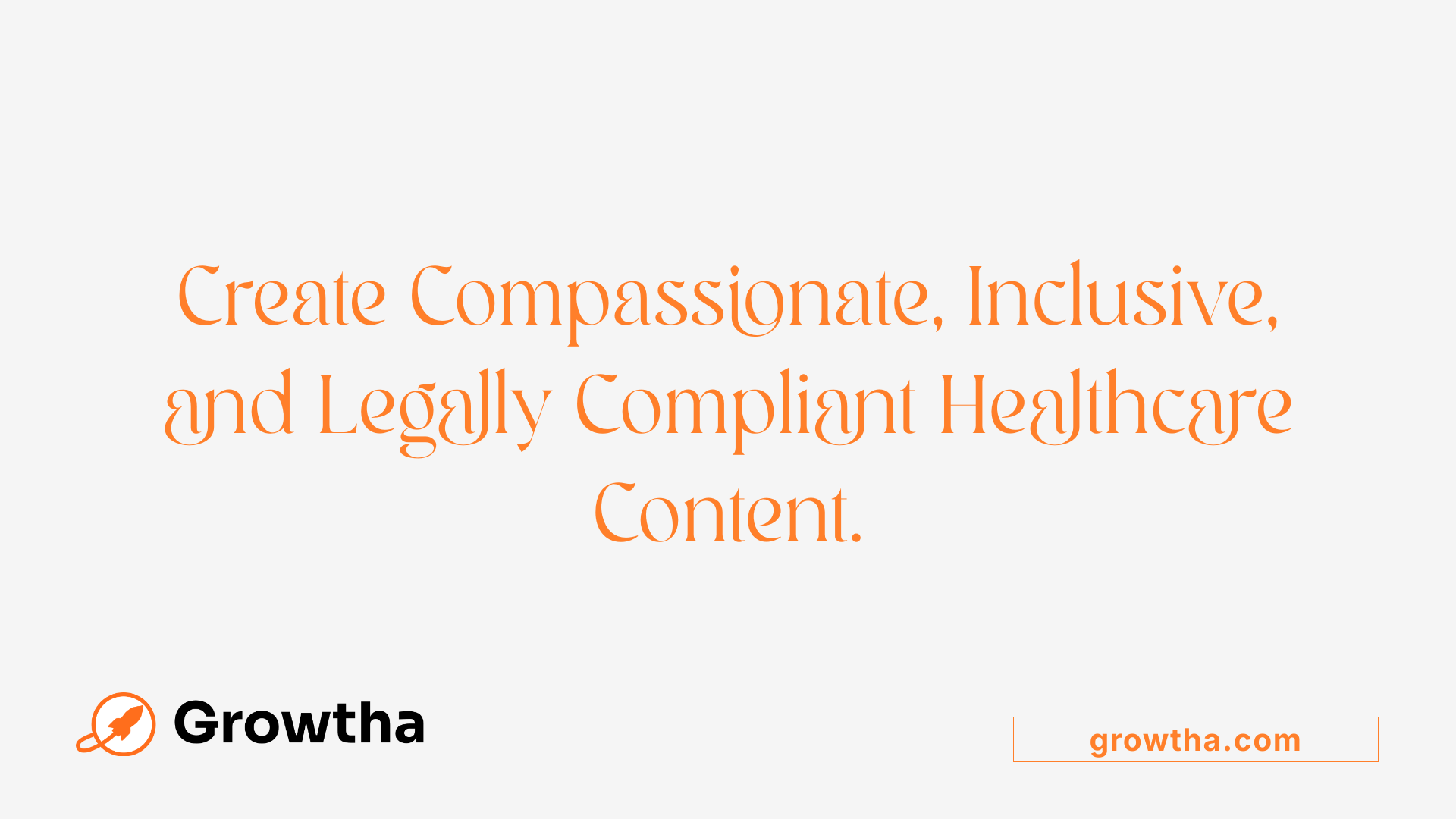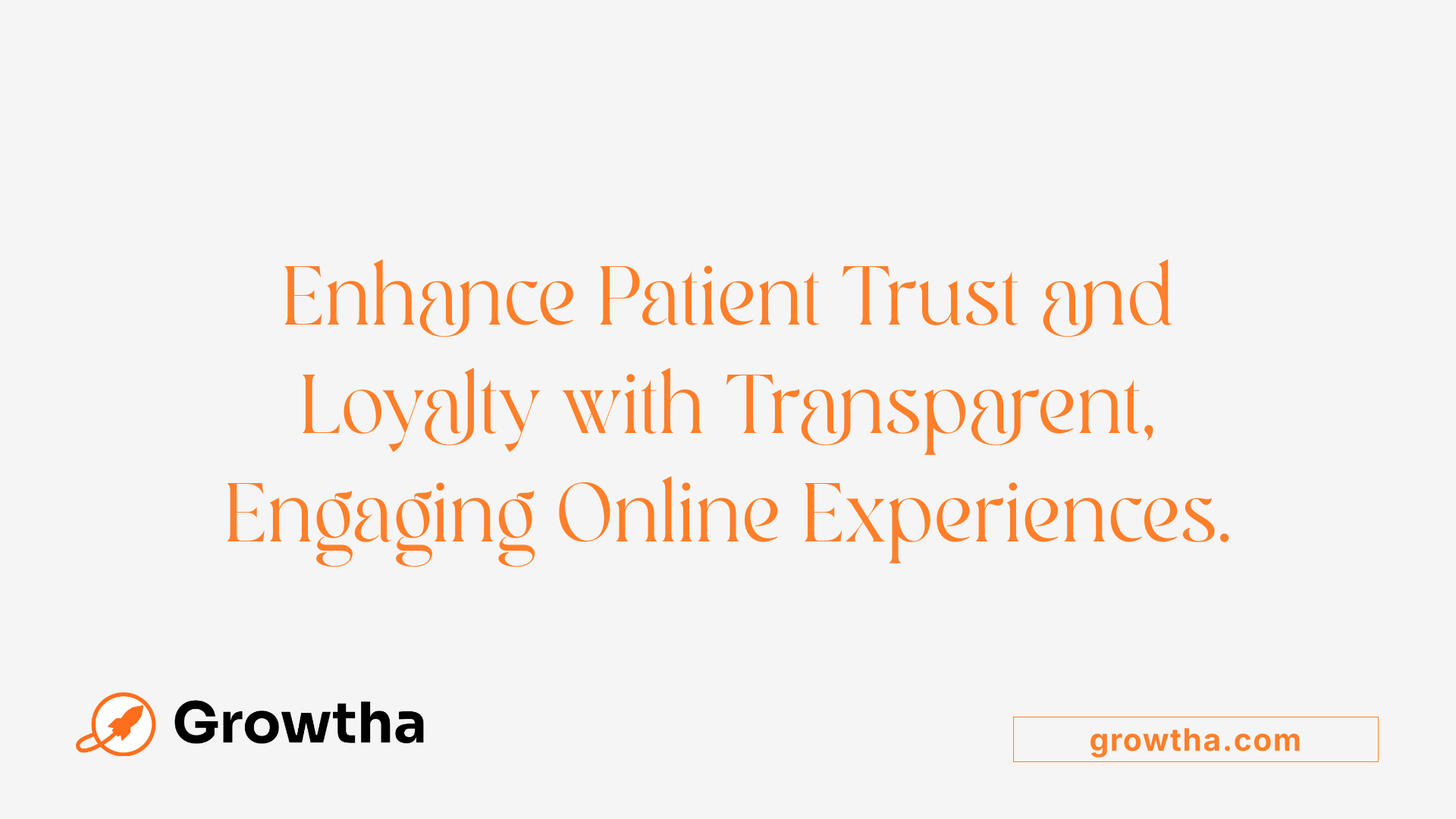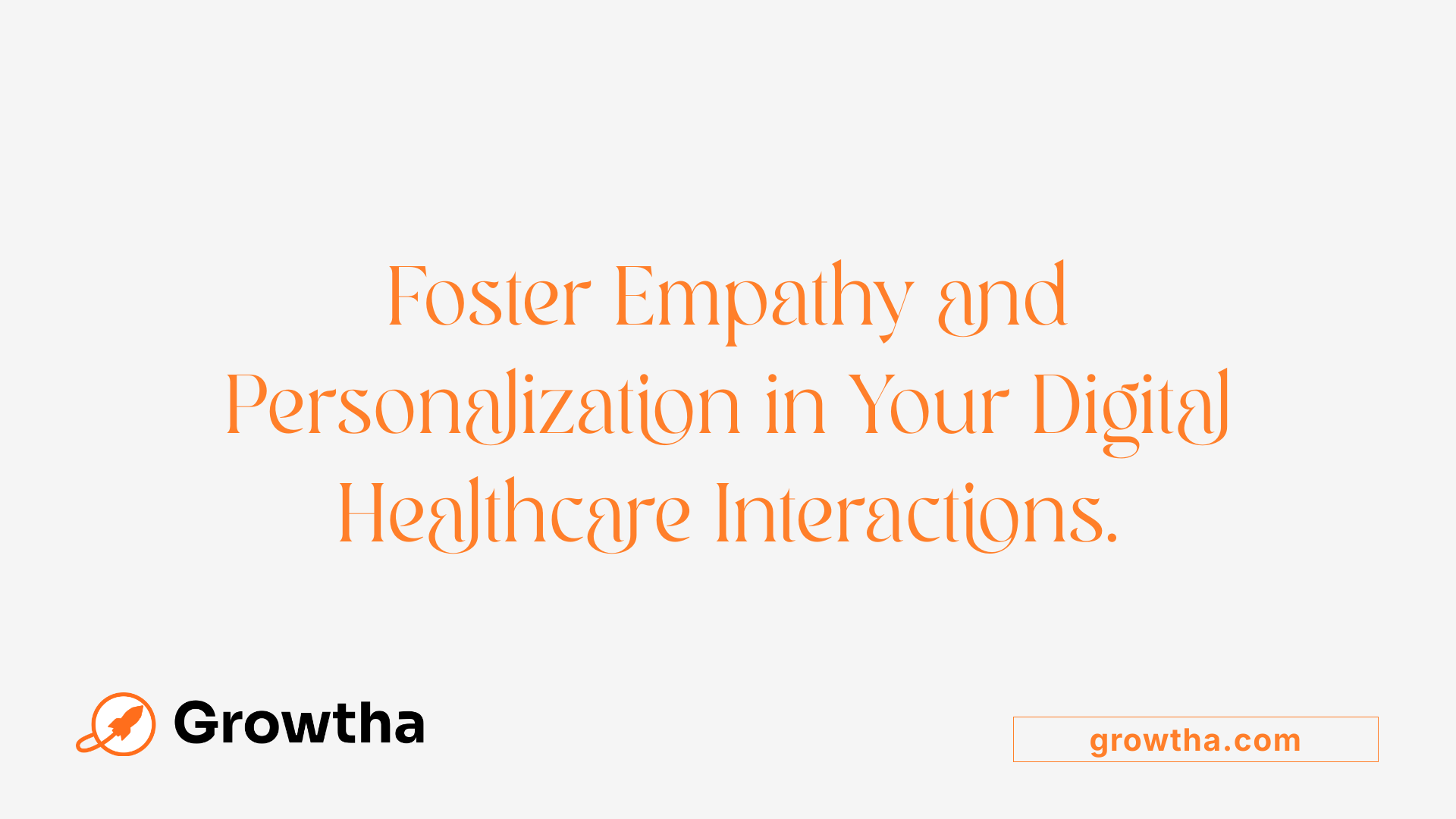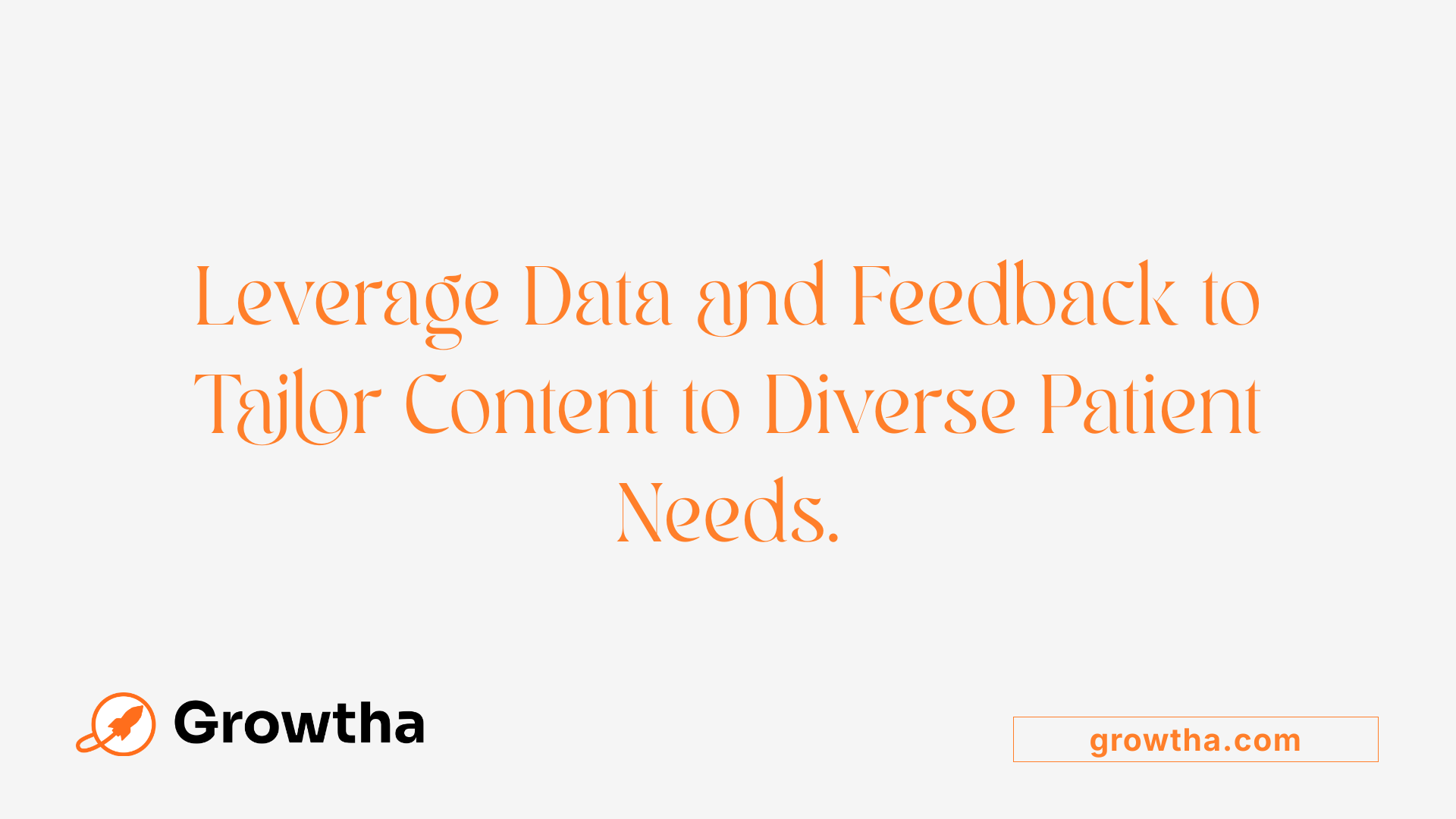Creating Patient-Centric Website Content for Better Engagement
Transforming Healthcare Engagement Through Strategic Content Design


Creating Patient-Centric Website Content for Better Engagement
Understanding the Power of Patient-Centric Web Content
In the digital age, healthcare providers must prioritize creating websites that truly serve patient needs. A patient-centric website unlocks better engagement, improved trust, and enhanced health outcomes by delivering tailored, accessible, and empathetic content. This article explores how healthcare entities can develop and implement effective web content strategies rooted in patient-centered principles, ultimately fostering stronger relationships and loyalty.
Foundations of Patient-Centric Content Strategy
Creating individualised content tailored to diverse patient needs
A successful patient-centric content strategy begins with understanding that each patient is unique, with different backgrounds, health literacy levels, and personal preferences. Content should be personalized to reflect these differences, helping patients feel valued and understood.
This involves segmenting audiences based on health journey stages, demographics, and individual concerns. Customised messages—such as tailored educational materials, targeted videos, and specific FAQs—can greatly improve engagement and foster trust.
Additionally, integrating interactive tools like symptom checkers, appointment schedulers, and chatbots enhances the user experience, making information more accessible and relevant.
Understanding the importance of cultural background, preferences, and health literacy
Cultural competence is vital in delivering effective healthcare content. Content must be culturally appropriate and available in multiple languages to reach diverse communities effectively.
Health literacy varies across populations; thus, information should be clear, concise, and jargon-free. Using visuals, infographics, and simple language helps bridge understanding gaps. Accessibility features such as high contrast, large fonts, and compatibility with assistive technology ensure inclusivity.
By recognizing these factors, healthcare providers can build trust, improve patient engagement, and support better health outcomes.
Effective strategies for developing patient-centered website content to enhance engagement
To maximize patient involvement, healthcare websites should focus on comprehensive research to identify patient needs. Accessibility compliance with WCAG guidelines ensures usability for everyone.
Content must be empathetic, transparent, and easy to understand, using a reassuring tone that resonates emotionally. Incorporating dynamic and regularly updated content optimized for search engines helps maintain relevance.
Interactive features—like online appointment booking, secure messaging, and educational videos—empower patients and facilitate ongoing engagement. Regular content audits and user feedback collection are essential to refine strategies and keep content aligned with patient expectations.
Designing Accessible and Empathetic Content

What are best practices for creating accessible and empathetic healthcare website content?
Creating healthcare website content that is both accessible and empathetic is crucial in delivering an inclusive patient experience. Best practices start with strict adherence to accessibility standards such as Web Content Accessibility Guidelines (WCAG) and Section 508. These standards ensure all users, including those with disabilities, can navigate, understand, and interact with web content.
Designers should incorporate features like alternative text (alt text) for images, high-contrast color schemes for readability, and adjustable font sizes. Providing multilingual options and translation services helps bridge communication gaps in diverse communities, further supporting health equity.
Equally important is crafting compassionate, clear language that is jargon-free and easy for patients to understand. Replace complex medical terminology with simple explanations, and use imagery that reflects diverse backgrounds to foster a welcoming environment.
Using multimedia resources, such as videos, infographics, and interactive tools, caters to different learning styles and enhances engagement. Interactive features like chatbots or accessible appointment scheduling can make the website more intuitive and user-centered.
Overall, a combination of legal compliance, empathetic communication, and inclusive design results in healthcare websites that offer valuable, easy-to-navigate information for every patient, regardless of their background or ability.
Building Trust and Loyalty via Digital Content

How can healthcare websites improve patient trust, satisfaction, and retention through their content?
Healthcare websites play a vital role in establishing ongoing relationships with patients. By providing transparent, accurate, and patient-centered information, they foster a sense of trust and credibility. Clear explanations about treatment options, visible credentials of healthcare professionals, and straightforward patient guides help demystify complex medical topics.
Incorporating multimedia elements like videos, infographics, and interactive tools makes content more engaging and easier to understand. Testimonials from actual patients offer real-world insights and build trust through social proof.
Secure access to personal health records via patient portals encourages transparency and empowers patients to take active roles in their health management. Streamlined appointment scheduling, real-time updates, and easy-to-find contact information improve overall satisfaction.
Finally, consistent opportunities for patient feedback and reviews help healthcare providers adapt content and services to meet evolving needs. Personalized messaging and understandable language reinforce the patient's sense that their care is tailored and trustworthy.
Efficient online content that is both credible and accessible nurtures loyalty, reduces unnecessary inquiries, and turns website visitors into long-term patients.
For additional insights on building patient trust and loyalty through healthcare websites, search using the phrase: "Patient trust loyalty healthcare websites."
Creating a trustworthy digital space is essential for healthcare providers aiming to connect meaningfully with their patients. Implementing these strategies ensures higher levels of patient engagement, improved satisfaction, and sustained loyalty over time.
Principles of Patient-Centered Digital Communication

What are the principles of patient-centered communication in digital healthcare content?
Effective digital communication in healthcare hinges on understanding and respecting individual patient needs and preferences. Central to this approach is personalized messaging that is transparent, empathetic, and easy to understand. Patients value clear information that acknowledges their unique backgrounds and health concerns, fostering trust and comfort.
Active listening plays a vital role, which can be achieved through secure patient portals where individuals can ask questions, provide feedback, and engage in shared decision-making. This ongoing dialogue supports better health outcomes and strengthens the patient-provider relationship.
Leveraging health information technology (IT) tools is crucial for enabling personalized interactions. Features such as tailored health education, appointment reminders, and real-time updates help keep patients engaged and informed. User-friendly interfaces, accessible content, and accessible language are all essential for ensuring inclusivity and effective communication.
Incorporating these principles into digital content ensures that healthcare providers deliver respectful, empathetic, and empowering messages, ultimately promoting a more patient-centered approach to healthcare.
Designing User-Friendly and Inclusive Healthcare Websites
How can healthcare websites be designed to prioritize patient experience and usability?
Creating effective healthcare websites requires a focus on user experience that puts patients at the center. This includes designing intuitive navigation that allows visitors to find information quickly, such as location details, provider directories, and appointment options. Simplified content with clear headings and minimal jargon improves readability, especially for diverse patient populations.
Responsive design is essential so that the website functions seamlessly across desktops, tablets, and smartphones. Fast loading times and high uptime are critical during emergencies or peak usage periods to ensure reliable access.
Accessibility features should conform to standards like the Web Content Accessibility Guidelines (WCAG). This involves providing options such as high-contrast colors, larger fonts, alt text for images, and keyboard navigation. Multilingual content and translation services help bridge communication gaps for diverse communities.
Regular accessibility audits, including testing with users of varied abilities, help identify and fix issues. Implementing AI tools can also promote inclusivity—such as automated alt text generation and language translation—making information accessible to all.
Incorporating these design principles fosters a trustworthy, user-centered environment that supports informed health decisions and enhances long-term patient engagement.
Strategic Use of Content Marketing and SEO
 Creating engaging, high-quality content such as blogs, videos, infographics, and FAQs is essential for connecting with the target audience and providing value. This content should address common patient questions, feature patient stories, and offer educational information about health conditions and treatments.
Creating engaging, high-quality content such as blogs, videos, infographics, and FAQs is essential for connecting with the target audience and providing value. This content should address common patient questions, feature patient stories, and offer educational information about health conditions and treatments.
Optimizing content for search engines involves incorporating relevant keywords, using schema markup, and ensuring technical SEO best practices. This enhances the website’s visibility in search results, making it easier for patients to find the information they need quickly. Clear, descriptive titles, meta descriptions, and structured data help search engines understand content relevance.
Building authority and enhancing visibility are achieved through consistent, valuable content and SEO strategies that increase organic traffic. This attracts new patients and encourages trust in the healthcare provider. Engaging and optimized content also encourages longer site visits, promotes sharing across digital platforms, and fosters ongoing relationships.
Overall, content marketing combined with SEO is foundational in establishing a healthcare website as a reliable, accessible source of health information. It nurtures patient engagement, boosts search rankings, and lays the groundwork for long-term patient loyalty.
| Aspect | Description | Additional Details |
|---|---|---|
| Content Types | Blogs, videos, infographics, FAQs | Variability caters to different learning styles and encourages interaction |
| SEO Strategies | Keyword research, schema markup, technical SEO | Improves search rankings and page visibility |
| Outcomes | Increased engagement, authority, patient acquisition | Leads to higher trust and loyalty |
Understanding and Addressing Patient Needs Digitally

How can healthcare providers better understand and address patient needs through website content?
Healthcare providers can enhance their digital engagement by actively leveraging patient feedback, social media insights, and data analytics. Feedback mechanisms such as surveys, online reviews, and direct communication help gather real-time insights into patient preferences and challenges.
Using data analytics, providers can identify patterns in patient behavior, such as common questions, preferred content formats, and navigation habits. Social media platforms serve as valuable sources of informal but rich patient sentiments, allowing providers to tailor content that resonates with specific communities.
Participatory design involves involving patients in the website development process through focus groups and usability testing. This collaborative approach ensures the content and design are patient-centered, culturally appropriate, and accessible.
Personalized website content, based on these insights, can include targeted educational articles, multimedia resources, and tailored health tips that align with individual needs. Such customization not only improves health literacy but also builds trust and encourages ongoing engagement.
Additionally, integrating features like multilingual support and culturally relevant content helps address diverse backgrounds. This approach ensures that every patient feels seen, understood, and supported, ultimately leading to better health outcomes.
Empowering patients with personalized, accessible, and culturally competent digital resources demonstrates a healthcare provider’s commitment to patient-centered care, fostering loyalty and improving overall engagement.
Empowering Patients Through Transparent and Educational Content
What strategies can be used to create informative, transparent, and educational healthcare web content that enhances patient decision-making?
Creating impactful healthcare content requires a focus on clarity, relevance, and accessibility. Strategies include providing evidence-based information about treatments, lifestyle choices, and self-management tips. Using diverse content formats such as videos, infographics, blogs, and FAQs helps address different learning preferences and makes information more engaging.
Transparency is vital; clearly sharing costs, procedures, and expected outcomes fosters trust. Including patient testimonials, detailed explanations, and step-by-step guides can demystify complex medical information.
Regulatory compliance is also essential. Ensuring web content aligns with HIPAA, FDA advertising regulations, and accessibility standards like WCAG builds credibility and guarantees safety. Incorporating secure communication channels, such as encrypted messaging and accessible design, encourages patients to actively participate in their healthcare decisions.
By combining these strategies, healthcare websites can become trusted resources that empower patients, improve engagement, and support better health outcomes.
Transforming Healthcare Engagement through Website Content
A patient-centric approach to healthcare website content combines accessibility, empathy, clear communication, and strategic marketing. Leveraging digital tools, feedback, and personalized content fosters trust, enhances satisfaction, and encourages long-term patient engagement. As healthcare continues to evolve, prioritizing these principles will ensure that digital platforms serve as powerful tools for improved health outcomes, loyalty, and patient empowerment.
References
- Developing a Patient Centric Marketing Strategy - WebMD Ignite
- Patient-Centric Websites: Strategies for Building Stronger Connections
- Healthcare Website Design Tips to Better Engage Patients - Highland
- Improving Your Patient Engagement Strategies With Content
- Delivering Patient-Centric Engagement for Healthcare - Model B
- Effective Strategies for Patient-Centric Marketing - EnticEdge
- Enhancing Patient Engagement With Strategic Content Marketing







